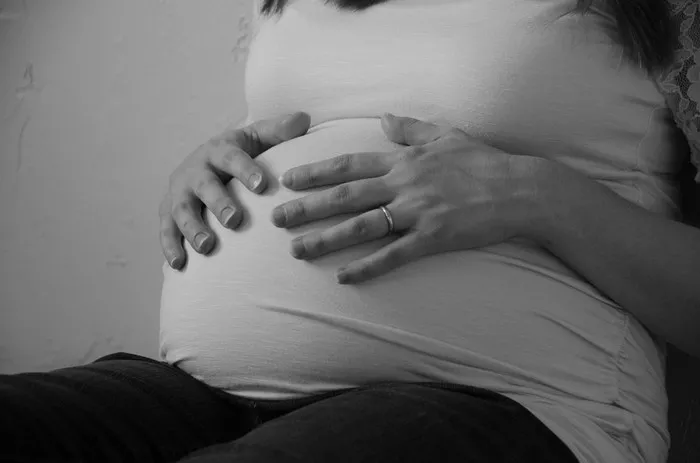Varicocele is a common condition that affects a significant number of men. It is characterized by the enlargement of the veins within the scrotum, often resulting in a visible and palpable swelling. This abnormal dilation of the pampiniform plexus of veins can lead to various symptoms such as testicular pain, a feeling of heaviness in the scrotum, and in some cases, it may have an impact on male fertility. While surgery has been a traditional approach for treating varicocele, there are several non-surgical alternatives that can potentially address this condition effectively. These non-surgical methods focus on improving blood flow, reducing inflammation, and restoring the normal physiological balance in the body.
Understanding Varicocele: Causes and Symptoms
Varicocele is primarily caused by the malfunctioning of the valves within the veins that drain the testicles. When these valves do not work properly, blood can back up and pool in the veins, leading to their enlargement. Some of the factors that may contribute to the development of varicocele include anatomical differences, increased pressure in the abdomen (such as from heavy lifting, straining, or obesity), and genetic predisposition.
The symptoms of varicocele can vary from mild to severe. Mild cases may be asymptomatic, while more severe cases can present with testicular pain that may be dull, aching, or sharp. The pain may be worse after standing or physical activity and may improve when lying down. A feeling of heaviness or dragging in the scrotum is also common. Infertility can occur in some men with varicocele, as the increased temperature and altered blood flow in the testicles can affect sperm production and quality.
Lifestyle Modifications
Dietary Changes
Increasing Antioxidant Intake: Foods rich in antioxidants like vitamins C and E, selenium, and zinc can help protect the testicular tissue from oxidative stress. Fruits such as oranges, strawberries, and kiwis are excellent sources of vitamin C. Nuts like almonds and seeds like sunflower seeds are good sources of vitamin E. Seafood and whole grains can provide selenium and zinc.
Reducing Sodium Intake: High sodium consumption can lead to fluid retention and increased blood pressure, which may exacerbate varicocele. Avoiding processed and junk foods that are typically high in sodium and opting for fresh, home-cooked meals with minimal salt is advisable.
Including Omega-3 Fatty Acids: Omega-3 fatty acids have anti-inflammatory properties. Fatty fish like salmon, mackerel, and sardines are rich in omega-3s. Flaxseeds and chia seeds are also good plant-based sources. These can help reduce inflammation in the affected veins and potentially improve blood flow.
Exercise and Physical Activity
Pelvic Floor Exercises: Kegel exercises, which are commonly associated with women’s health, can also be beneficial for men with varicocele. These exercises help strengthen the pelvic floor muscles, which can support the blood vessels in the pelvic area and improve blood circulation. To perform Kegel exercises, a man should contract the muscles he would use to stop the flow of urine and hold the contraction for a few seconds before releasing.
Aerobic Exercises: Moderate aerobic activities such as walking, jogging, or cycling can improve overall cardiovascular health and blood flow. Regular aerobic exercise helps in maintaining a healthy weight, reducing abdominal pressure, and promoting better circulation throughout the body, including the pelvic region. However, it is important to avoid excessive or strenuous exercise that may put too much strain on the pelvic area.
Yoga and Stretching: Certain yoga poses like the butterfly pose, cobra pose, and child’s pose can help stretch and relax the pelvic muscles. These poses can also improve flexibility and blood flow in the lower body. Additionally, stretching exercises that target the hips and groin area can relieve tension and potentially reduce the discomfort associated with varicocele.
Posture Correction
Maintaining an Upright Posture: Slouching or sitting for long periods in a hunched position can compress the blood vessels in the abdomen and pelvis, impeding blood flow. Maintaining an upright posture, whether sitting or standing, helps in ensuring proper blood circulation. When sitting, using an ergonomic chair and keeping the back straight and shoulders relaxed is important. When standing, distributing the weight evenly on both feet and keeping the chin up and chest out can make a significant difference.
Taking Frequent Breaks: For those who have jobs that require prolonged sitting or standing, taking frequent breaks to move around and stretch is crucial. This helps in preventing the pooling of blood in the lower extremities and pelvic area. Even short breaks every hour or so to walk a few steps and change position can have a positive impact on blood flow and reduce the strain on the veins.
Compression Garments
Compression garments, such as scrotal support briefs or compression shorts, can be effective in relieving the symptoms of varicocele. These garments work by applying gentle pressure to the scrotum, which helps in reducing the pooling of blood in the varicose veins. The compression promotes better blood flow back to the heart, thereby alleviating the feeling of heaviness and pain. They are available in different levels of compression, and a healthcare provider can recommend the appropriate one based on the severity of the varicocele. Wearing compression garments during the day, especially when engaged in activities that may increase abdominal pressure or when standing for long periods, can provide significant relief and potentially slow down the progression of the condition.
Herbal and Nutritional Supplements
Horse Chestnut Extract
Horse chestnut extract contains compounds called aescin, which have anti-inflammatory and vein-strengthening properties. It helps in reducing the swelling and dilation of the varicose veins in the scrotum. By improving the tone of the vein walls, it can enhance blood flow and reduce the pooling of blood. However, it is important to note that horse chestnut extract may interact with certain medications, so it is advisable to consult a healthcare provider before starting supplementation.
Butcher’s Broom
Butcher’s Broom is another herb that has been used traditionally for venous disorders. It contains substances that can constrict the blood vessels, reducing their diameter and improving blood flow. It also has anti-inflammatory effects, which can help in relieving the pain and swelling associated with varicocele. Like horse chestnut extract, it is essential to discuss its use with a doctor, especially if a person has other underlying health conditions or is taking other medications.
Vitamin E and C Supplements
Vitamin E and C are powerful antioxidants. Vitamin E helps in protecting the cell membranes from damage, while vitamin C is involved in collagen synthesis, which is important for the integrity of the blood vessels. These vitamins can help in reducing oxidative stress in the testicular tissue and the varicose veins, potentially improving the overall health of the affected area. However, excessive intake of these vitamins can also have adverse effects, so it is crucial to follow the recommended dosage.
Acupuncture and Traditional Chinese Medicine
Acupuncture, a key component of Traditional Chinese Medicine (TCM), can be used to treat varicocele. The acupuncturist inserts thin needles into specific points on the body, which are believed to stimulate the flow of Qi (vital energy) and blood. In the case of varicocele, points in the lower abdomen, groin, and legs may be targeted. This stimulation can help in regulating the blood flow, reducing inflammation, and relieving pain. TCM also may involve the use of herbal formulas that are tailored to the individual’s constitution and the specific symptoms of varicocele. These herbal formulas often contain a combination of herbs that have properties such as promoting blood circulation, reducing stasis, and tonifying the Qi and blood. However, it is important to seek treatment from a qualified and licensed acupuncturist or TCM practitioner.
Mind-Body Techniques
Stress Reduction
Stress can have a significant impact on the body’s physiological functions and can potentially worsen varicocele symptoms. Techniques such as meditation, deep breathing exercises, and progressive muscle relaxation can help in reducing stress levels. Meditation involves focusing the mind and achieving a state of relaxation and mental clarity. Deep breathing exercises, like diaphragmatic breathing, increase the oxygen supply to the body and activate the parasympathetic nervous system, which counteracts the stress response. Progressive muscle relaxation helps in releasing tension in the muscles, which can also relieve stress.
Counseling and Psychotherapy: In some cases, psychological counseling or psychotherapy may be beneficial. The stress and anxiety associated with having a varicocele and its potential impact on fertility can be overwhelming. A trained counselor or therapist can help a person cope with these emotions, develop healthy coping strategies, and manage stress more effectively.
Biofeedback
Biofeedback is a technique that uses electronic devices to measure and provide feedback on physiological processes such as muscle tension, heart rate, and blood pressure. By learning to control these processes through the feedback provided, a person can potentially improve blood flow and reduce the symptoms of varicocele. For example, a person can learn to relax the pelvic floor muscles and reduce abdominal pressure, which can have a positive impact on the blood vessels in the scrotum.
Conclusion
In conclusion, while surgery has been a common treatment option for varicocele, there are several non-surgical alternatives that can be explored. Lifestyle modifications, compression garments, herbal and nutritional supplements, acupuncture and Traditional Chinese Medicine, and mind-body techniques can all play a role in managing varicocele and its symptoms. However, it is important to note that the effectiveness of these non-surgical methods may vary from person to person, and it is advisable to consult a healthcare provider before starting any new treatment regimen. A comprehensive approach that combines multiple non-surgical methods may offer the best chance of successfully managing varicocele without the need for surgery.
Related topics
























